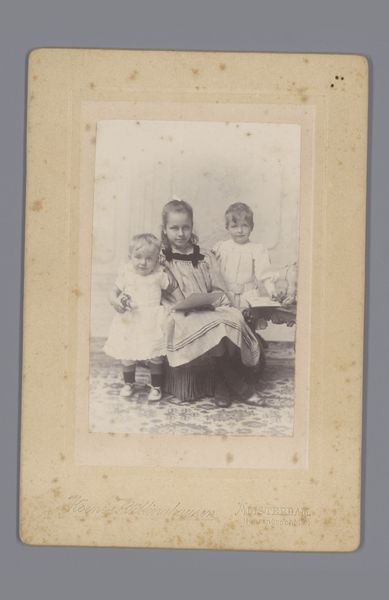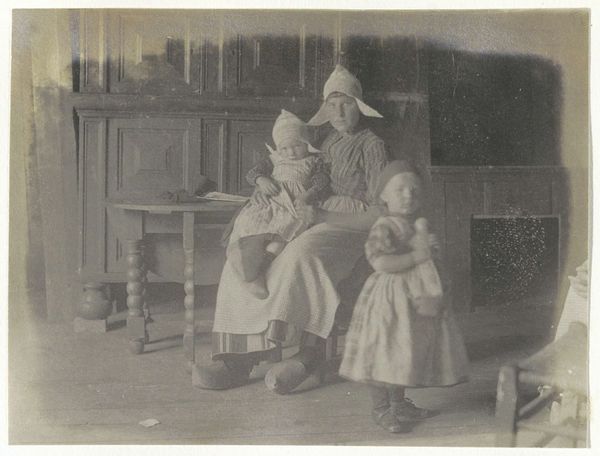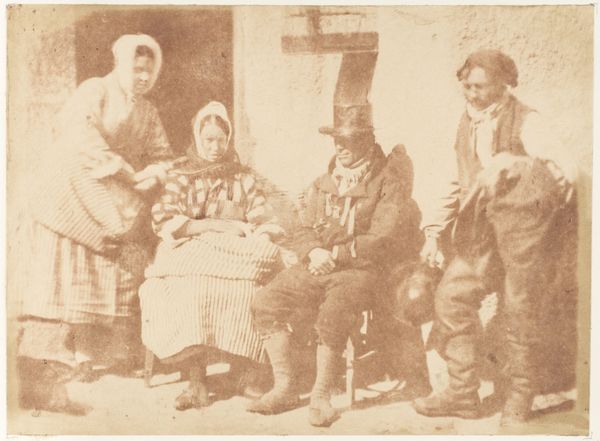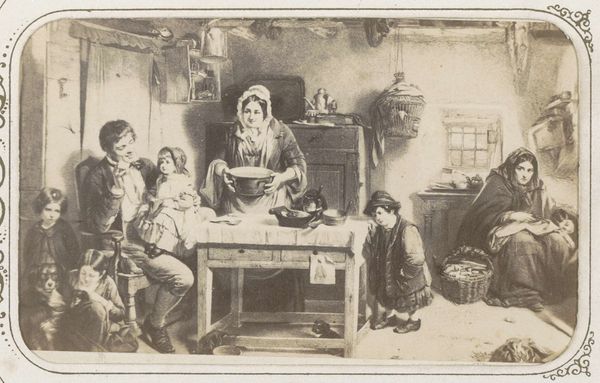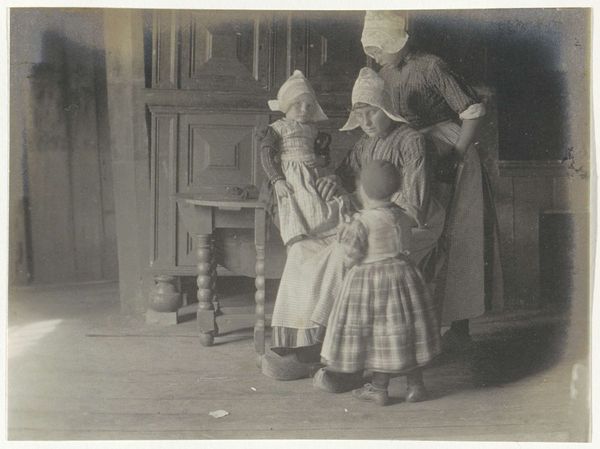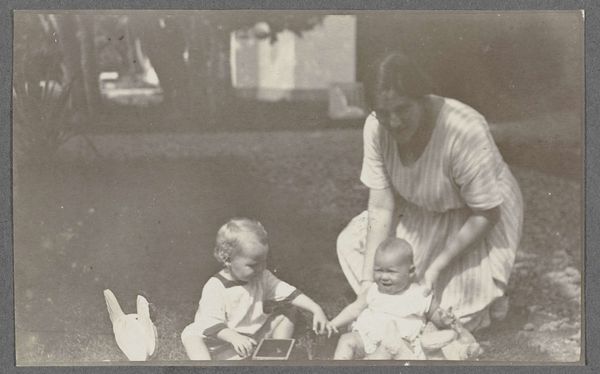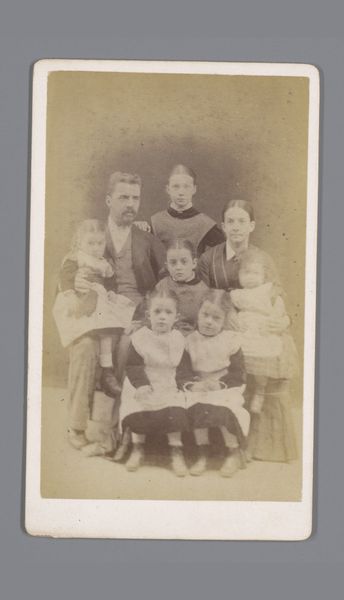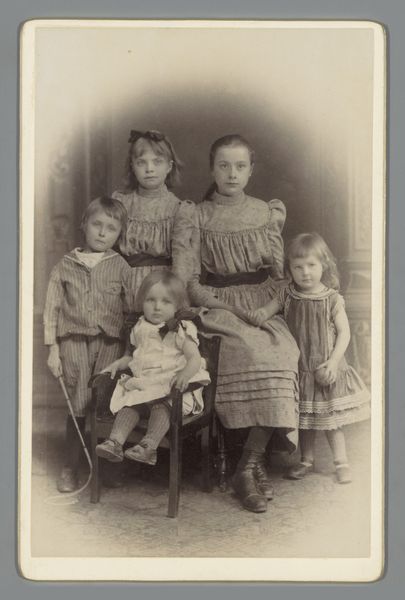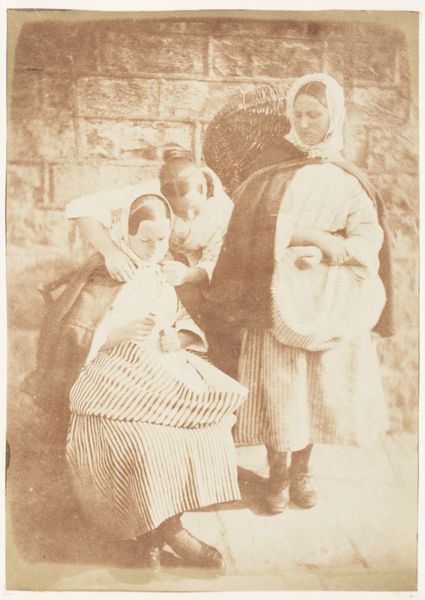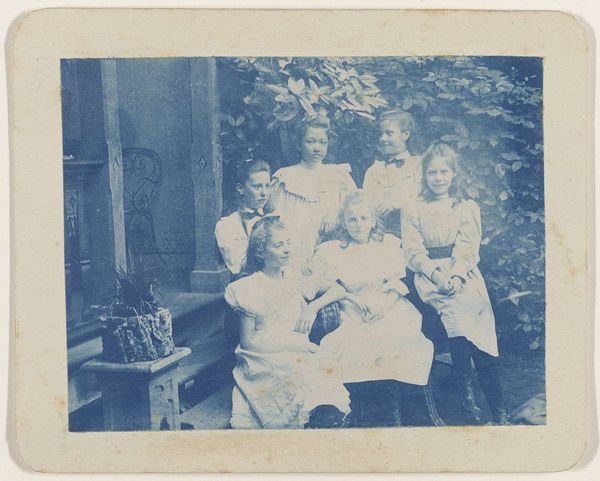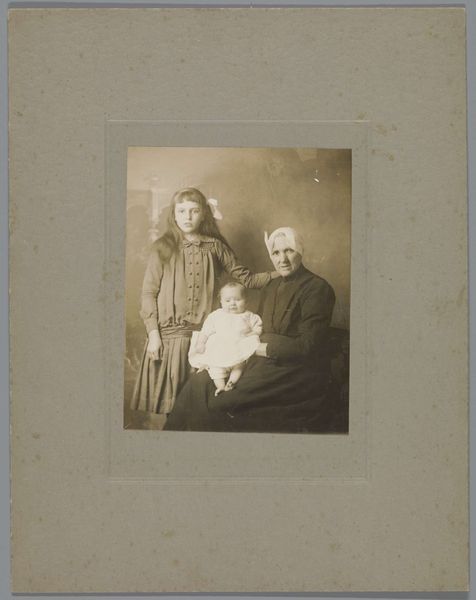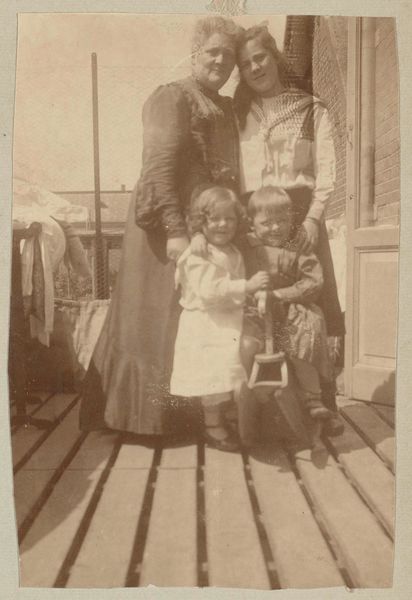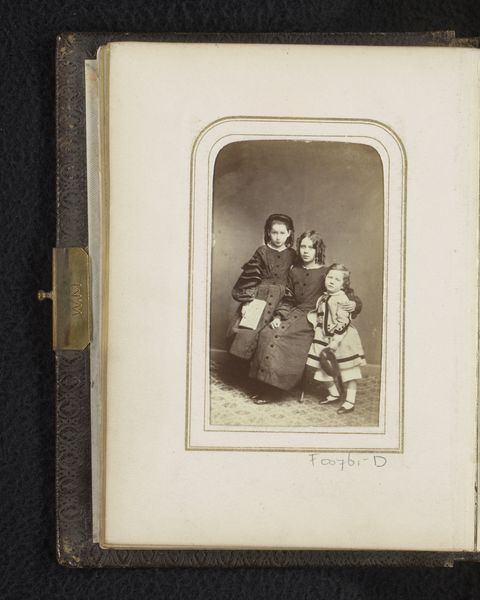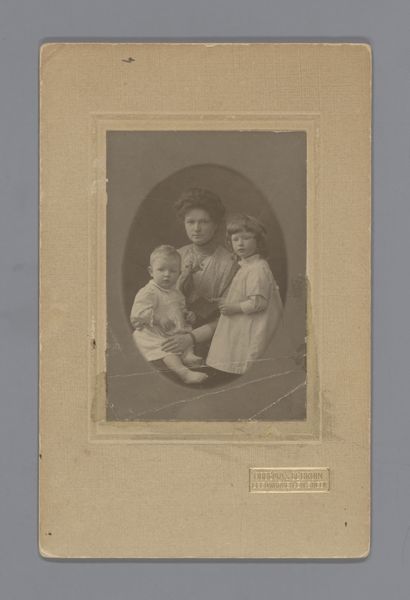![[Frances Crowell with Unidentified Boy, Katie, James, and Frances Crowell] by Thomas Eakins](/_next/image?url=https%3A%2F%2Fd2w8kbdekdi1gv.cloudfront.net%2FeyJidWNrZXQiOiAiYXJ0ZXJhLWltYWdlcy1idWNrZXQiLCAia2V5IjogImFydHdvcmtzLzFhMzIwNWVjLWJiZjUtNDBmNS1hMGJlLTMzMjFhYmRhM2Q1MS8xYTMyMDVlYy1iYmY1LTQwZjUtYTBiZS0zMzIxYWJkYTNkNTFfZnVsbC5qcGciLCAiZWRpdHMiOiB7InJlc2l6ZSI6IHsid2lkdGgiOiAxOTIwLCAiaGVpZ2h0IjogMTkyMCwgImZpdCI6ICJpbnNpZGUifX19&w=3840&q=75)
[Frances Crowell with Unidentified Boy, Katie, James, and Frances Crowell] 1890
0:00
0:00
photography, gelatin-silver-print
#
portrait
#
print photography
#
girl
#
boy
#
photography
#
historical photography
#
group-portraits
#
gelatin-silver-print
#
realism
Dimensions: 7.8 x 9.2 cm (3 1/16 x 3 5/8 in.)
Copyright: Public Domain
Editor: This is an 1890 gelatin silver print by Thomas Eakins, titled "[Frances Crowell with Unidentified Boy, Katie, James, and Frances Crowell]." It's a family portrait, and there's something really intimate about the scene. How do you interpret the dynamics captured in this work? Curator: Eakins' photography, especially these family portraits, often engages with notions of domesticity and gender roles within the late 19th-century American context. We see Frances Crowell, likely the mother, surrounded by children, which speaks to the societal expectations placed on women during this era. But I think the slightly uneasy gazes challenge that simplistic narrative; notice how the children aren’t all directly engaging with the camera. What might that signify? Editor: Perhaps a discomfort or an unawareness of the picture taking process? Maybe it humanizes them. In many portraits from the same time, everyone looks so stiff. Curator: Exactly, and consider that alongside Eakins’ commitment to realism. He’s not idealizing the family; he's presenting a version of their everyday life, including perhaps the disruption of being photographed. Moreover, consider how notions of childhood are being framed – or perhaps not framed – challenging us to think about evolving definitions. There are tensions in the expressions that pull us into their world. Editor: That's a helpful way to think about it, framing the ordinary as significant and questioning traditional gender roles. Curator: Precisely, it forces us to confront the complex layers within seemingly simple portraits, prompting questions about social norms and identity construction in that period. I see the photograph as a tableau for a shifting social landscape. Editor: That really broadens my understanding of this work. I appreciate you illuminating the way that portraits like these, usually relegated as ephemera of a bygone era, contain so much layered commentary on how humans are perceived.
Comments
No comments
Be the first to comment and join the conversation on the ultimate creative platform.
